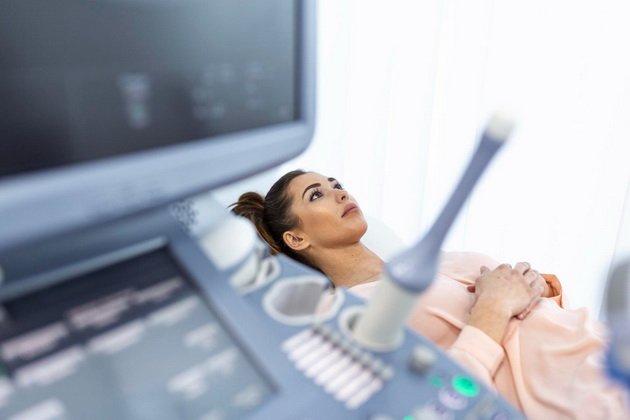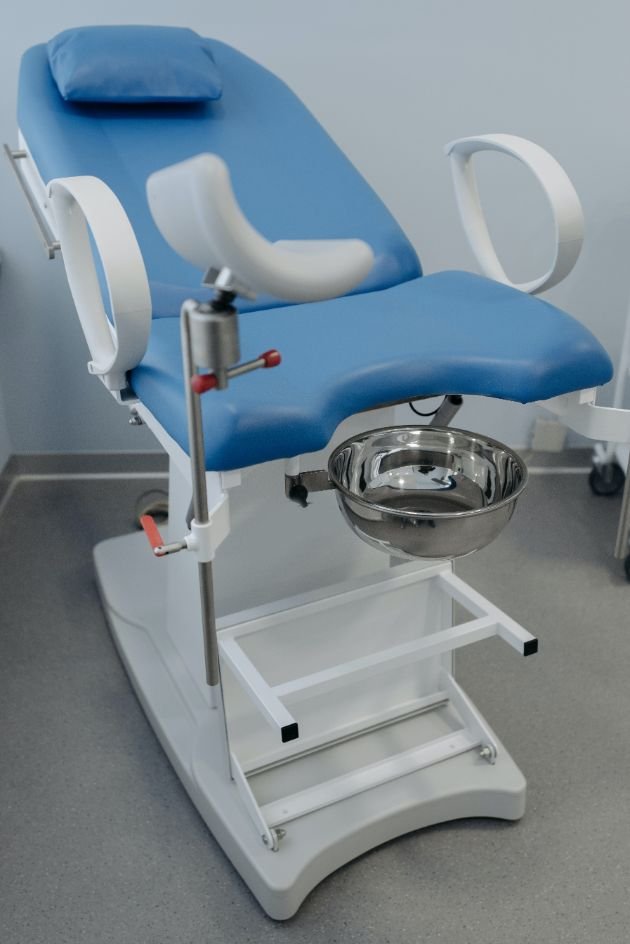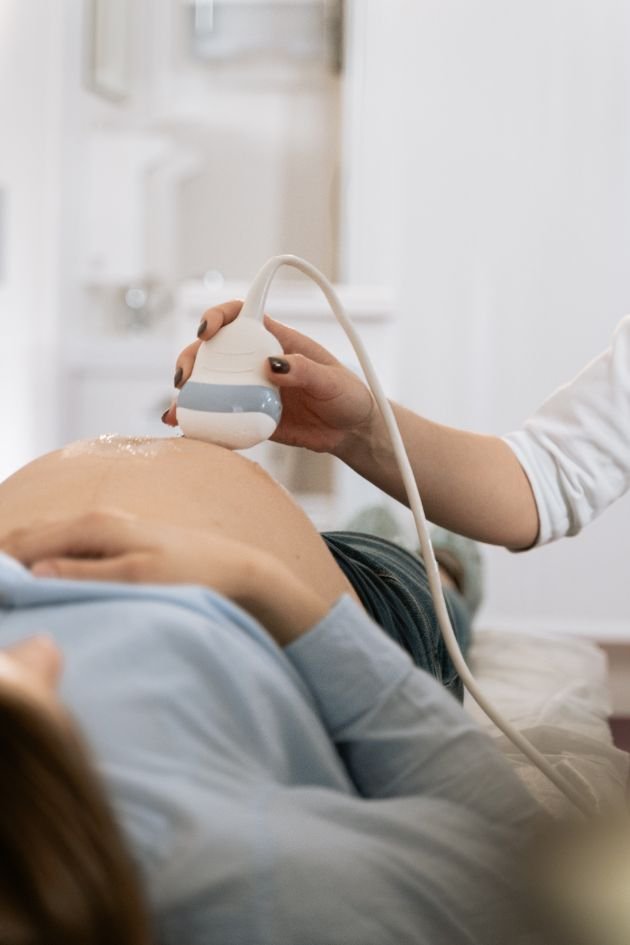Fibroids can enlarge the uterus up to 10 times, and you can have more than one fibroid at the same time. Can they turn into cancer, do they affect pregnancy, how are they treated and can fibroids go away on their own?
Fibroids are benign growths on or around the uterus.
It is a tissue that is composed of muscle tissues and fibers, and their size can vary.
Many women develop uterine fibroids before the age of 50.
However, if they do not have symptoms, some are not even aware that they have them.
Fibroids are usually discovered during routine gynecological examinations.

What are uterine fibroids and why do they occur?
Fibroids are benign growths of the uterus that often occur during the reproductive period.
It is a fibroid tissue that is in no way associated with an increased risk of uterine cancer and almost never turns into cancer.
It is extremely rare for a fibroid to undergo changes that will transform it into a cancerous or malignant tumor.
In fact, one in 350 women develops malignancy.
These tissues are different in size, starting from the smallest, invisible to the naked eye, to large masses that can enlarge the uterus up to 10 times.
It is also possible that you have one or more uterine fibroids.
Fibroids can appear in several places in the uterus:
- They can occur inside the uterine wall (in the tissue itself) and are called intramural fibroids.
- They can also grow in the uterine cavity, they are called submucosal.
- Those that appear on the outer wall of the uterus are called subserous, and some may have a stalk that is attached to the inner or outer wall of the uterus and are called pedunculated fibroids.

The true cause of fibroids is not fully known.
They are thought to be related to the secretion of the hormone estrogen.
That is why they appear in the reproductive age of a woman (from 16 to 50 years) – then the level of this hormone is the highest.
It is possible that they also decrease after menopause, due to the decrease in hormone levels.
Previous research has shown that the following have a higher risk of uterine fibroids:
- Women of African descent;
- Women with increased body weight;
- Women who have a genetic predisposition to the development of fibroids;
- Women who got their period quite early;
- Women using birth control pills;
- Women with vitamin D deficiency;
- Women who consume a lot of red meat, alcohol and caffeine.

How dangerous are fibroids?
Although fibroids are generally not dangerous, nor are they associated with the risk of developing cancer of any reproductive organ, they can lead to certain discomforts and complications.
First of all, they can cause a reduced number of red blood cells in the blood (anemia), which causes fatigue and weakness.
They can also sometimes make it difficult for a woman to get pregnant and cause serious complications during pregnancy.
Fibroids very rarely burst on their own.

Symptoms that indicate you have uterine fibroids
One in three women experience symptoms, and the rest have no symptoms.
Symptoms may include:
– Heavy or painful menstrual cycles;
– Pain in my stomach;
– Pain in the lower back;
– Frequent need to urinate;
– Difficulty urinating;
– Constipation;
– Pain or discomfort during intercourse.

The impact of fibroids on pregnancy
Fibroids usually do not cause problems during conception.
However, certain types of fibroids, such as submucosal ones, can cause infertility.
Therefore, the effect on fertility depends on the location and size of the fibroid, as well as the symptoms. Fibroids can prevent the embryo from implanting.
Embryo implantation can also be prevented by larger fibroids, that is, those over 4 centimeters, which are located in the tissue of the uterus.
Some fibroids can block the fallopian tubes, which can also cause infertility.
In most women who have uterine fibroids, the pregnancy goes well.
However, complications are possible and may result in the need for cesarean delivery, the baby may remain in the breech position before delivery, and the pregnancy may stall.
More serious complications can also cause premature birth.
Therefore, experts advise submucosal fibroids to be operated on before becoming pregnant.

Diagnosis and treatment of fibroids
Fibroids are usually detected by ultrasound.
It is the easiest way to examine the uterus, and fibroids are usually easy to see.
The ultrasound examination can be preceded by a medical examination – the doctor will feel the enlarged uterus and will suspect the presence of fibroids.
Small fibroids can sometimes be detected only by ultrasound.
Treatment is not necessary if women do not have any symptoms and fibroids do not cause complications.
The type of therapy depends on the symptoms, the location, the size of the fibroid, as well as the planning of the pregnancy.
Therapy may include:
– Hormonal drugs that reduce fibroids (GnRH agonists, progesterone antagonists);
– Surgical treatment (laparoscopy, hysteroscopy, embolization).
Most experts believe that the largest fibroid that can be operated on laparoscopically is about 9 to 10 centimeters in diameter.

Can fibroids heal themselves?
Fibroids are thought to grow under the influence of estrogen.
They can be of different sizes and grow at different speeds, depending on the woman.
Sometimes they grow quickly and the symptoms get worse, while some women don’t even notice any symptoms or the symptoms go away on their own over time.
It is believed that a healthy and balanced diet can slow down the growth of fibroids and reduce symptoms.
Since most fibroids stop growing or even shrink as a woman approaches menopause, the doctor may suggest waiting for surgery.

Pregnancy after myoma surgery
Most experts advise to wait at least 3 months after fibroid surgery before becoming pregnant.
In the meantime, the doctor will check how the recovery is progressing by checking the thickness of the endometrium of the uterus – a thickness of 10 millimeters is considered normal thickness for pregnancy.
He will also check the patency of the fallopian tubes, to make sure that there are no mechanical obstacles in the movement of the sperm and the fertilized egg.
Pregnancy after myoma surgery is sometimes possible only through in vitro fertilization.
Whether the doctor will recommend natural attempts or in vitro fertilization depends on several factors, such as the number of fibroids operated on, the age of the woman, the period of infertility treatment, and so on.
In vitro is usually recommended 6 months after surgery.